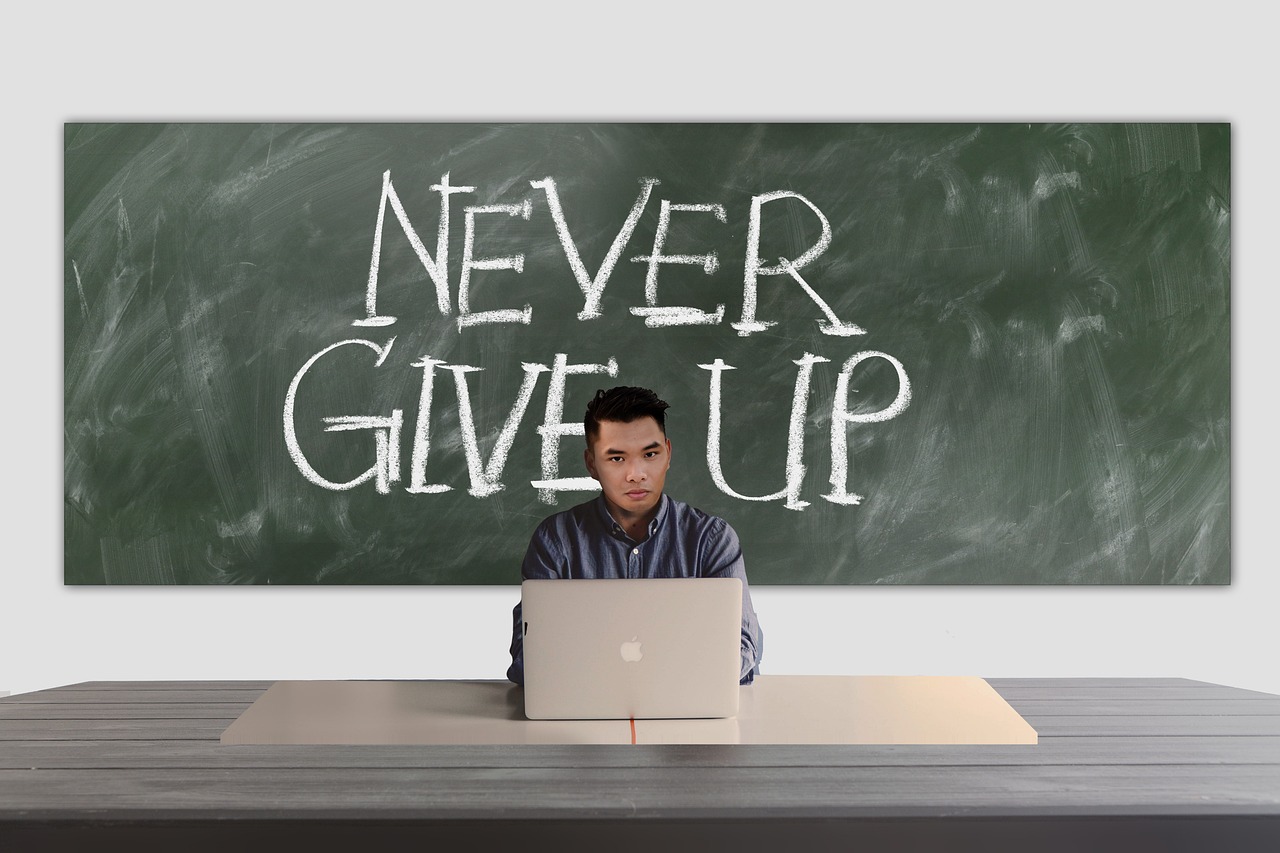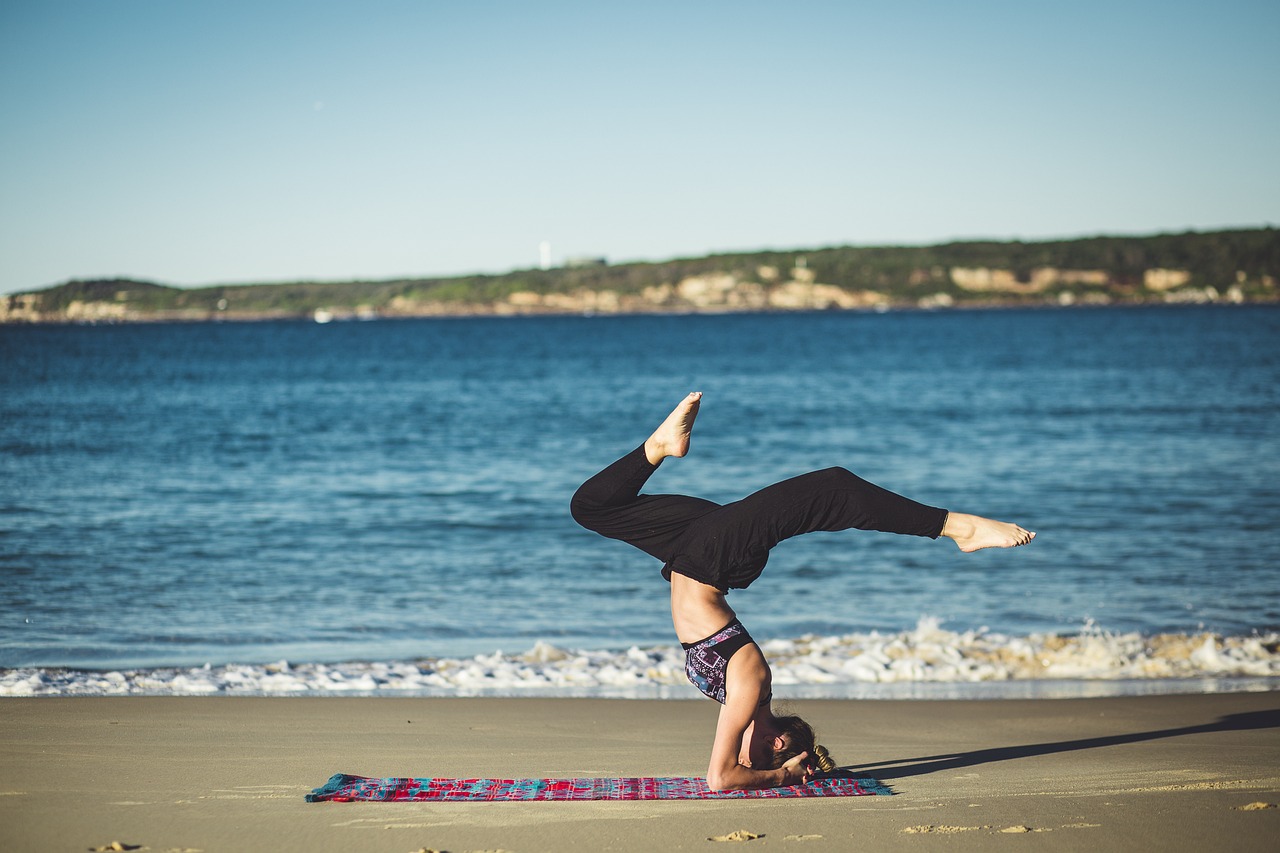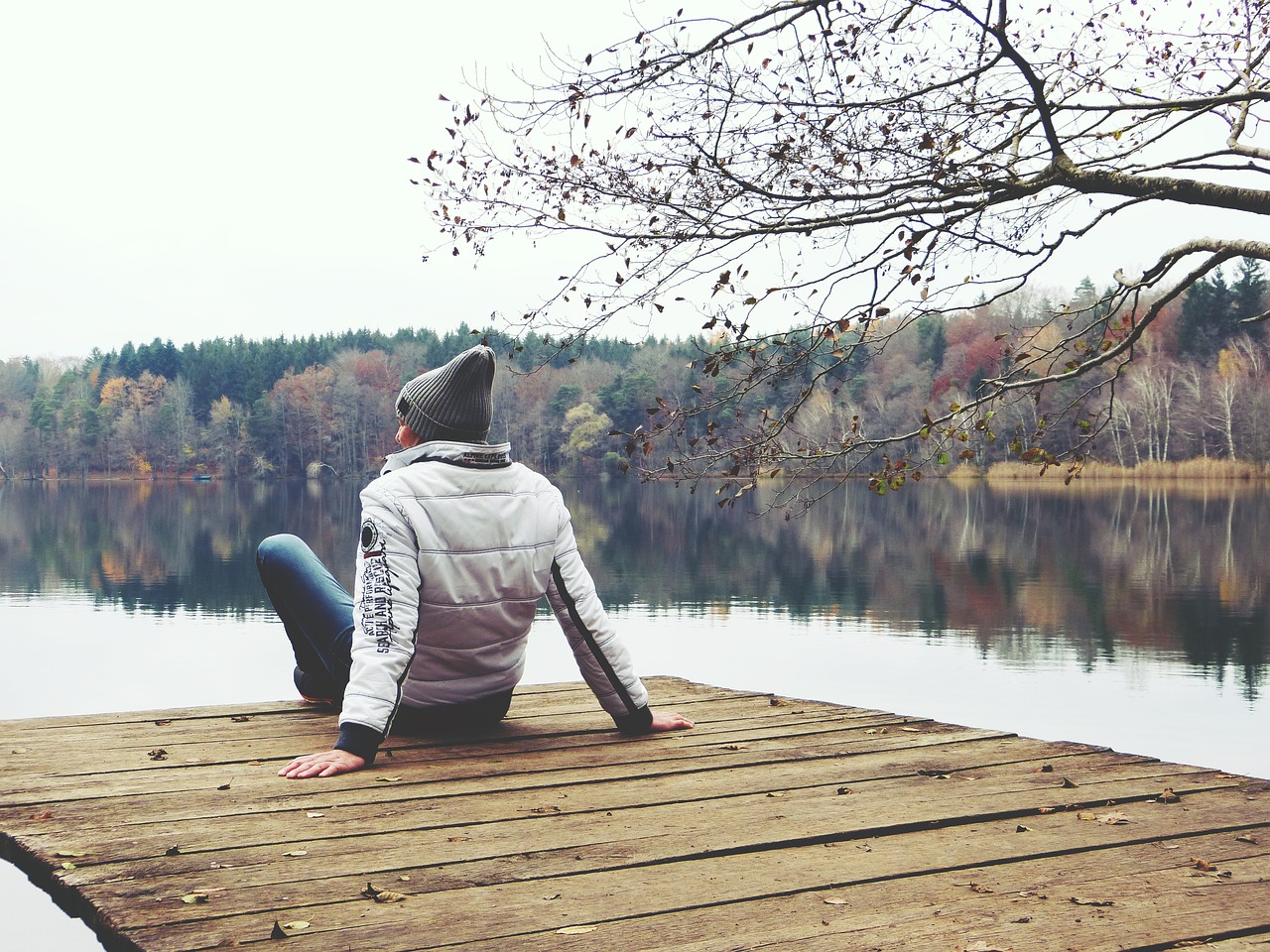Balance – The Key to Effective Self-Defense Techniques
When it comes to self-defense, one might think of powerful strikes, swift movements, or even the latest martial arts techniques. However, the unsung hero of effective self-defense is often balance. Yes, you heard that right! Balance is not just about standing on one leg or performing yoga poses; it’s about maintaining equilibrium in both body and mind during a confrontation. Imagine a tightrope walker who, with every step, must focus on their center of gravity to avoid falling. Similarly, in self-defense, maintaining balance can mean the difference between dodging an attack and being caught off guard. So, let’s dive into why balance is crucial for anyone looking to enhance their self-defense skills.
Understanding how balance contributes to self-defense can significantly impact your ability to respond effectively in threatening situations. It involves stability, coordination, and control, which are essential for executing techniques successfully. Picture yourself in a scenario where an aggressor approaches you. If you're off-balance, even the most well-practiced moves can become ineffective. Your body’s ability to maintain stability not only enhances your reaction time but also boosts your confidence in handling confrontations. Balance allows you to absorb impacts, pivot quickly, and respond with agility. It’s like having an invisible shield that keeps you grounded and ready for action.
There are various forms of balance, including static and dynamic balance. Each type plays a unique role in self-defense, influencing how practitioners maintain stability during movement and confrontation. Think of static balance as the foundation of a house; without it, the structure is at risk of collapsing. On the other hand, dynamic balance is akin to a well-oiled machine, allowing for smooth, coordinated movements. Understanding these types can help you tailor your training to become a more effective self-defender.
Static balance refers to maintaining stability while stationary. This form is crucial for executing techniques like strikes or holds, ensuring that the practitioner remains grounded and ready to react. Imagine you’re standing firm, preparing to deliver a powerful punch. If your balance is off, that punch may lack the necessary force and precision. Proper posture and body alignment are vital components of static balance. They help distribute weight evenly, allowing for greater control and reducing the risk of being off-balance during an encounter.
Proper posture and body alignment are vital components of static balance. They help distribute weight evenly, allowing for greater control and reducing the risk of being off-balance during an encounter. Think of your body as a well-balanced scale; if one side is heavier, it tips over. Maintaining good posture ensures that you can react quickly and effectively, keeping you on your feet even in the most challenging situations.
Foot placement is another key aspect of static balance. Ensuring feet are positioned correctly can enhance stability, enabling quicker and more effective responses to an opponent's actions. Just like a tree needs strong roots to withstand the wind, your feet serve as the foundation for your movements. By practicing proper foot placement, you can develop a solid base that allows you to execute techniques with confidence.
Dynamic balance involves maintaining stability while in motion. It is essential for executing techniques that require movement, such as dodging or counterattacking, and is critical for effective self-defense. Imagine a dancer gracefully moving across the stage; their ability to maintain balance while performing intricate movements is what captivates the audience. In self-defense, dynamic balance allows you to evade attacks and reposition yourself for a counterstrike.
Training specifically for balance can improve overall self-defense skills. Various exercises and drills can enhance stability, coordination, and strength, ultimately leading to more effective responses in high-pressure situations. Think of balance training as the gym session for your body’s equilibrium. The more you work on it, the stronger and more reliable it becomes.
Incorporating balance exercises into your training regimen can significantly enhance your self-defense capabilities. Activities like yoga, tai chi, and specific drills can improve your overall stability and control. For instance, practicing yoga not only increases flexibility but also teaches you how to center your body and maintain poise under pressure.
Core strength plays a pivotal role in maintaining balance. A strong core supports better posture and stability, allowing for more effective movement and technique execution in self-defense scenarios. Think of your core as the trunk of a tree; it supports the branches (your limbs) and keeps everything upright. Without a strong trunk, the tree is vulnerable to the forces of nature. Similarly, a strong core fortifies your balance and enhances your ability to respond to threats.
Understanding and applying balance in real-life self-defense situations can make a significant difference. This section explores how balance techniques can be utilized effectively during actual confrontations. Imagine facing an attacker in a crowded area. Your ability to maintain balance amidst the chaos can dictate the outcome of the encounter. By learning to adapt your balance to different scenarios, you increase your chances of successfully defending yourself.
Self-defense scenarios vary widely, requiring adaptability. Learning how to maintain balance in different environments and situations is crucial for successfully defending oneself against various types of attacks. Whether you’re on uneven ground or in a tight space, your ability to adjust your balance can turn the tide in your favor.
Effective self-defense is about integrating balance with technique. This combination ensures that movements are not only powerful but also controlled, allowing for successful defense and escape when necessary. Think of a martial artist executing a high kick; it’s not just about the height of the kick but also about how well they maintain their balance throughout the motion. By mastering both balance and technique, you become a formidable force in any self-defense situation.
- Why is balance important in self-defense? Balance enhances stability, reaction time, and control during confrontations.
- What are some exercises to improve balance? Activities like yoga, tai chi, and specific balance drills can be very effective.
- How does core strength affect balance? A strong core supports better posture and stability, which are essential for maintaining balance.
- Can balance techniques be applied in real-life situations? Absolutely! Maintaining balance in various scenarios can significantly improve your self-defense effectiveness.

The Importance of Balance in Self-Defense
Understanding how balance contributes to self-defense can significantly impact your ability to respond effectively in threatening situations. Imagine you're in a high-pressure scenario, and your body is swaying like a tightrope walker on a windy day. If you lack balance, even the most powerful technique can fall flat. Balance is not just about standing still; it encompasses stability, coordination, and control, which are essential for executing techniques successfully.
When we talk about balance in self-defense, we’re really discussing how well you can maintain your center of gravity while facing an opponent. Think of it like a tree in a storm; the stronger the roots, the less likely it is to topple over. This stability allows you to absorb impacts and respond with quick, decisive movements. In a confrontation, maintaining balance can be the difference between dodging an attack and being caught off guard.
Moreover, balance enhances your reaction time. When you are well-balanced, your body can respond faster to changes in your environment. For instance, if an assailant lunges at you, a balanced stance enables you to pivot or sidestep swiftly without losing your footing. This ability to move fluidly can create opportunities for counterattacks or escapes, making you a more formidable opponent.
Incorporating balance training into your self-defense practice can also improve your overall safety during confrontations. A well-balanced individual is less likely to fall or get knocked down, which is crucial in a self-defense situation where being on the ground can make you vulnerable. In essence, having a solid foundation allows you to focus on your techniques without worrying about losing your footing.
To sum it up, balance is a fundamental aspect of effective self-defense. It enhances your stability, improves your reaction time, and increases your overall safety during confrontations. Whether you’re learning to throw a punch, execute a kick, or perform a hold, remember that a strong sense of balance will amplify your effectiveness and confidence in any self-defense scenario.

Types of Balance in Self-Defense
When it comes to self-defense, understanding the different types of balance is crucial. Balance is not just a physical concept; it's the foundation upon which effective self-defense techniques are built. In the realm of self-defense, we can categorize balance into two main types: static balance and dynamic balance. Each type serves its unique purpose, influencing how practitioners maintain their stability during various movements and confrontations.
Static balance refers to the ability to maintain stability while remaining stationary. Picture a tree standing firm against the wind; it’s the same principle. This type of balance is essential when executing techniques such as strikes or holds. When you're grounded and stable, you can deliver powerful strikes or maintain a firm grip on an opponent without the risk of losing your footing. Proper posture and body alignment play a significant role here, ensuring that your weight is evenly distributed. This alignment reduces the likelihood of being off-balance during an encounter, allowing you to react swiftly and confidently.
On the other hand, dynamic balance involves maintaining stability while in motion. Imagine a tightrope walker gracefully navigating the rope; they must constantly adjust their balance as they move. This type of balance is vital for executing techniques that require movement, like dodging an attack or counterattacking. Dynamic balance allows you to flow seamlessly between offensive and defensive maneuvers, making it a critical component of effective self-defense.
To illustrate the differences between these two types of balance, consider the following table:
| Type of Balance | Description | Examples in Self-Defense |
|---|---|---|
| Static Balance | Maintaining stability while stationary. | Executing a punch, holding an opponent, or performing a stance. |
| Dynamic Balance | Maintaining stability while in motion. | Dodging attacks, counterattacking, or moving to a safer position. |
Both types of balance are essential for a well-rounded self-defense strategy. By understanding and practicing both static and dynamic balance, practitioners can enhance their ability to respond effectively to various threats. Whether you're standing firm to deliver a strike or moving fluidly to evade an attack, balance is the key that unlocks your potential in self-defense.

Static Balance
Static balance is a fundamental aspect of self-defense that involves maintaining stability while remaining stationary. Imagine standing on one leg, feeling grounded and in control; that's the essence of static balance. It’s crucial for executing various techniques, such as strikes, holds, or even defensive postures. When you have a solid foundation, you can react more effectively to an opponent's movements. Think of it like a well-rooted tree; the stronger the roots, the less likely it is to topple over in a storm.
One of the key components of static balance is proper posture and alignment. When your body is aligned correctly, your weight is evenly distributed, which enhances your control and reduces the risk of being off-balance during an encounter. You can visualize this as the difference between a shaky house of cards and a sturdy building; the latter can withstand external pressures much better. Maintaining a good posture not only helps in self-defense but also contributes to your overall physical health.
Foot placement plays an equally important role in achieving static balance. The way your feet are positioned can greatly affect your stability. For instance, having your feet shoulder-width apart creates a strong base, allowing you to pivot or shift your weight quickly if needed. To illustrate this, consider a table with four legs; if one leg is uneven, the table wobbles. The same principle applies to your stance in self-defense. Proper foot placement enables quicker and more effective responses to an opponent's actions, ensuring that you’re always ready to react.
In summary, mastering static balance is vital for anyone interested in self-defense. It equips you with the necessary skills to maintain control during confrontations, allowing you to execute techniques with precision. By focusing on your posture and foot placement, you can enhance your stability, making you a more formidable opponent. Remember, in the world of self-defense, being grounded is not just a physical state—it's a mental one as well.
- What is static balance?
Static balance refers to the ability to maintain stability while remaining stationary, crucial for executing self-defense techniques. - Why is posture important in static balance?
Proper posture ensures weight distribution and control, reducing the risk of being off-balance during an encounter. - How can I improve my static balance?
Practicing exercises that focus on posture, alignment, and foot placement can significantly enhance your static balance.

Posture and Alignment
When it comes to self-defense, are not just about standing tall and looking confident; they are the foundational elements that can make or break your effectiveness in a confrontation. Imagine trying to catch a ball while standing on a tightrope—if your posture is off, you'll likely lose your balance and miss the catch. Similarly, in self-defense, maintaining the right posture can mean the difference between successfully executing a technique or falling victim to an attack.
Good posture involves keeping your body aligned in a way that allows for optimal movement and stability. This means your head should be up, shoulders back, and feet shoulder-width apart, creating a solid base. Why is this so important? Because when you're properly aligned, your body can respond quickly and efficiently to any threat. You’ll have greater control over your movements, allowing you to strike or evade effectively.
Alignment also plays a crucial role in weight distribution. When your weight is evenly distributed, you can pivot, turn, or shift your body without losing balance. This is particularly important when facing an opponent who may try to push or pull you off-balance. Think of it like a well-constructed building; if the foundation is solid, the structure can withstand a storm. Here are a few key points to remember about posture and alignment:
- Feet Position: Your feet should be positioned firmly on the ground, with the weight distributed evenly between them. This helps in maintaining stability and readiness.
- Knees Slightly Bent: Keeping your knees slightly bent allows for quicker movements and helps absorb impact, preventing injuries.
- Core Engagement: Engaging your core muscles provides additional support and stability, enhancing your overall posture.
In practice, you can enhance your posture and alignment through specific drills. For instance, practicing stances used in martial arts can help you internalize what proper alignment feels like. Over time, this will translate into better reactions in real-life situations. Remember, self-defense is not just about physical techniques; it’s also about being aware of your body and how it moves. By focusing on posture and alignment, you’re setting yourself up for success in any self-defense scenario.
- What is the best stance for self-defense? The best stance generally involves a shoulder-width foot placement with knees slightly bent, allowing for both stability and mobility.
- How can I improve my posture for self-defense? Regular practice of martial arts or balance exercises, along with core strengthening activities, can significantly improve your posture.
- Is posture really that important in a fight? Absolutely! Good posture allows for better movement, quicker reactions, and reduces the risk of injury during a confrontation.

Foot Placement
When it comes to self-defense, is not just a minor detail; it's a game-changer. Imagine trying to stand firm on a boat during a storm. If your feet aren't positioned correctly, you'll be tossed around like a rag doll. The same principle applies in self-defense situations. Proper foot placement enhances your balance, allowing you to respond quickly and effectively to any threat.
First, let's talk about the foundational stance. Ideally, your feet should be shoulder-width apart. This position creates a solid base, much like a tree with deep roots. When your feet are planted firmly, you’re less likely to be knocked off balance, making it easier to execute strikes or defensive maneuvers. Additionally, your knees should be slightly bent, which not only helps in maintaining balance but also prepares your body for quick movements.
Another essential aspect of foot placement is the direction your toes are pointing. They should generally face your opponent, as this alignment allows for immediate movement in any direction. Think of it as being a coiled spring; when you're ready to spring into action, you want to minimize the time it takes to pivot or dodge. If your toes are pointed away from your opponent, you may find yourself in a vulnerable position, unable to react swiftly.
Furthermore, consider the concept of weight distribution. Your weight should be evenly distributed between both feet. If you lean too far to one side, you risk losing stability and becoming an easy target. To practice this, you can try standing on one foot while maintaining your balance; this will help you become more aware of your body’s center of gravity and how to control it effectively.
In addition to these tips, it's beneficial to practice footwork drills. Here are a few exercises you can incorporate into your routine to improve your foot placement:
- Shadowboxing: Focus on maintaining your stance and moving fluidly while keeping your feet positioned correctly.
- Footwork Ladder Drills: Use an agility ladder to practice quick, precise foot placements. This enhances coordination and speed.
- Partner Drills: Work with a partner to practice maintaining your stance while reacting to their movements.
Ultimately, mastering foot placement is about practice and awareness. The more you train your body to adopt the right positions instinctively, the more confident you'll feel in high-pressure situations. Remember, in self-defense, every little detail counts, and your feet are your foundation. So, the next time you find yourself in a training session, take a moment to evaluate your foot placement. It could very well be the difference between a successful defense and a missed opportunity.
Q: Why is foot placement so important in self-defense?
A: Proper foot placement enhances your balance and stability, allowing for quicker and more effective responses to threats.
Q: How can I practice my foot placement?
A: Incorporate footwork drills, shadowboxing, and partner exercises into your training routine to improve your foot placement skills.
Q: What stance should I adopt for optimal foot placement?
A: A shoulder-width stance with slightly bent knees and toes facing your opponent is ideal for maintaining balance and readiness.

Dynamic Balance
Dynamic balance is an essential aspect of self-defense that allows practitioners to maintain stability while moving. Imagine trying to catch a ball while running; if your balance is off, you might stumble or miss the catch entirely. In self-defense, this concept is just as critical. Whether you're dodging a punch, executing a kick, or maneuvering to escape an attacker, your ability to stay balanced while in motion can make all the difference between success and failure.
When we talk about dynamic balance, we refer to the body's ability to control its center of gravity during movement. This involves not just the legs, but also the core and upper body. Think of it like a well-tuned orchestra; every part must work in harmony to produce a seamless performance. In self-defense, every step, turn, and strike requires coordination and balance to ensure that you can respond effectively to any situation. Without dynamic balance, even the most powerful techniques may fall flat, leaving you vulnerable.
To effectively develop dynamic balance, practitioners can engage in various activities that promote stability and coordination. Here are some effective methods:
- Footwork Drills: Practicing movement patterns, such as shuffling or pivoting, can enhance your ability to maintain balance while transitioning between stances.
- Agility Training: Exercises that involve quick changes of direction can simulate real-life scenarios, improving your balance under pressure.
- Martial Arts Techniques: Regularly practicing techniques that require movement, like kicks or throws, can help you learn to maintain your balance during action.
Incorporating these training methods into your routine not only enhances your dynamic balance but also improves your reaction time and overall effectiveness in self-defense situations. Remember, the goal is not just to be able to throw a punch or execute a kick, but to do so while remaining grounded and ready for whatever comes next.
Ultimately, mastering dynamic balance is about understanding your body's mechanics and how to leverage them in real-time scenarios. It's akin to riding a bike; once you find that sweet spot of balance, everything else falls into place. In self-defense, being able to move fluidly while maintaining your center of gravity means you can evade attacks, strike back, and escape if necessary.
Q: What is the difference between static and dynamic balance?
A: Static balance refers to maintaining stability while stationary, while dynamic balance involves maintaining stability during movement.
Q: How can I improve my dynamic balance?
A: You can improve dynamic balance through footwork drills, agility training, and practicing martial arts techniques that require movement.
Q: Why is balance important in self-defense?
A: Balance is crucial in self-defense as it enhances your ability to react quickly and effectively, allowing you to execute techniques while maintaining control.

Training for Balance
Training specifically for balance is not just a good idea; it's essential for anyone serious about self-defense. Think of balance as the foundation of a house; without a sturdy base, everything else is at risk of collapsing. When you enhance your balance, you’re not only improving your stability but also your coordination and reaction time. This means that when a confrontation arises, you can respond with agility and confidence, rather than floundering like a fish out of water.
Incorporating balance exercises into your routine can transform your self-defense skills dramatically. Activities like yoga and tai chi are fantastic for building a strong foundation of balance. These practices emphasize slow, controlled movements that enhance body awareness and stability. Imagine standing on one leg while reaching out to grab something; if your core is strong and your balance is steady, you’ll do it with ease. However, if you lack balance, you might find yourself wobbling or even falling over!
Additionally, specific drills can be tailored to improve your balance for self-defense. For example, practicing footwork drills can help you understand how to position your feet effectively during a confrontation. Here are a few exercises you might consider:
- Single-Leg Stands: Stand on one leg for as long as you can. This simple exercise can significantly improve your static balance.
- Dynamic Lunges: Perform lunges while focusing on maintaining balance as you move. This mimics the movements you'll need in self-defense situations.
- Balance Boards: Using a balance board can challenge your stability and improve your core strength.
Speaking of core strength, it plays a pivotal role in maintaining balance. Think of your core as the trunk of a tree; if it’s strong, the branches can sway in the wind without breaking. A strong core supports better posture and stability, allowing for more effective movement and technique execution in self-defense scenarios. By integrating core-strengthening exercises into your training, such as planks or medicine ball workouts, you’ll create a solid base from which to operate.
Ultimately, the journey to mastering balance in self-defense is not a sprint but a marathon. It requires consistent practice and dedication. As you train, remember that every step you take towards improving your balance brings you closer to becoming a more effective self-defender. So, lace up those training shoes, find your center, and let’s get to work!
Q: How often should I practice balance exercises?
A: Ideally, you should incorporate balance training into your routine at least 2-3 times a week for optimal results.
Q: Can I improve my balance without special equipment?
A: Absolutely! Many balance exercises can be done using just your body weight, such as single-leg stands or lunges.
Q: How long will it take to see improvements in my balance?
A: Improvement can vary, but with consistent practice, you may start to notice changes within a few weeks.
Q: Is balance training suitable for all ages?
A: Yes, balance training can benefit individuals of all ages, although the exercises may need to be modified for different fitness levels.

Balance Exercises
This article explores the crucial role of balance in self-defense techniques, highlighting how maintaining equilibrium enhances effectiveness, improves reaction time, and increases overall safety during confrontations.
Understanding how balance contributes to self-defense can significantly impact your ability to respond effectively in threatening situations. It involves stability, coordination, and control, which are essential for executing techniques successfully.
There are various forms of balance, including static and dynamic balance. Each type plays a unique role in self-defense, influencing how practitioners maintain stability during movement and confrontation.
Static balance refers to maintaining stability while stationary. This form is crucial for executing techniques like strikes or holds, ensuring that the practitioner remains grounded and ready to react.
Proper posture and body alignment are vital components of static balance. They help distribute weight evenly, allowing for greater control and reducing the risk of being off-balance during an encounter.
Foot placement is another key aspect of static balance. Ensuring feet are positioned correctly can enhance stability, enabling quicker and more effective responses to an opponent's actions.
Dynamic balance involves maintaining stability while in motion. It is essential for executing techniques that require movement, such as dodging or counterattacking, and is critical for effective self-defense.
Training specifically for balance can improve overall self-defense skills. Various exercises and drills can enhance stability, coordination, and strength, ultimately leading to more effective responses in high-pressure situations.
Incorporating balance exercises into your training regimen can significantly enhance your self-defense capabilities. Activities like yoga, tai chi, and specific drills can improve your overall stability and control. These exercises not only work on your physical balance but also help in developing mental focus, which is equally important in self-defense scenarios.
For instance, practicing yoga can help you cultivate a strong foundation. The various poses require you to engage your core and maintain equilibrium, which translates directly to your ability to stay grounded during a confrontation. Similarly, tai chi emphasizes fluid movements and balance, allowing you to practice shifting your weight and responding to changes in your environment smoothly.
Additionally, you can include specific drills aimed at enhancing your balance, such as:
- Single-leg stands: Stand on one leg for as long as possible, gradually increasing the duration.
- Balance beam exercises: Walk along a narrow surface to challenge your stability.
- Agility ladder drills: Use a ladder on the ground to improve foot placement and coordination.
These exercises not only improve your balance but also build strength in the muscles that support your movements. Remember, a strong core plays a pivotal role in maintaining balance. A strong core supports better posture and stability, allowing for more effective movement and technique execution in self-defense scenarios.
Understanding and applying balance in real-life self-defense situations can make a significant difference. This section explores how balance techniques can be utilized effectively during actual confrontations.
Self-defense scenarios vary widely, requiring adaptability. Learning how to maintain balance in different environments and situations is crucial for successfully defending oneself against various types of attacks.
Effective self-defense is about integrating balance with technique. This combination ensures that movements are not only powerful but also controlled, allowing for successful defense and escape when necessary.
Q: Why is balance important in self-defense?
A: Balance is crucial because it allows you to maintain stability and control during a confrontation, making your movements more effective and reducing the risk of falling or being overpowered.
Q: What are some simple exercises to improve balance?
A: Simple exercises include single-leg stands, yoga poses, and agility drills. These can be easily incorporated into your daily routine.
Q: Can I improve my balance at any age?
A: Absolutely! Balance exercises can be adapted for all fitness levels and ages, making them accessible to everyone.

Role of Core Strength
This article explores the crucial role of balance in self-defense techniques, highlighting how maintaining equilibrium enhances effectiveness, improves reaction time, and increases overall safety during confrontations.
Understanding how balance contributes to self-defense can significantly impact your ability to respond effectively in threatening situations. It involves stability, coordination, and control, which are essential for executing techniques successfully.
There are various forms of balance, including static and dynamic balance. Each type plays a unique role in self-defense, influencing how practitioners maintain stability during movement and confrontation.
Static balance refers to maintaining stability while stationary. This form is crucial for executing techniques like strikes or holds, ensuring that the practitioner remains grounded and ready to react.
Proper posture and body alignment are vital components of static balance. They help distribute weight evenly, allowing for greater control and reducing the risk of being off-balance during an encounter.
Foot placement is another key aspect of static balance. Ensuring feet are positioned correctly can enhance stability, enabling quicker and more effective responses to an opponent's actions.
Dynamic balance involves maintaining stability while in motion. It is essential for executing techniques that require movement, such as dodging or counterattacking, and is critical for effective self-defense.
Training specifically for balance can improve overall self-defense skills. Various exercises and drills can enhance stability, coordination, and strength, ultimately leading to more effective responses in high-pressure situations.
Incorporating balance exercises into your training regimen can significantly enhance your self-defense capabilities. Activities like yoga, tai chi, and specific drills can improve your overall stability and control.
Core strength plays a pivotal role in maintaining balance. A strong core supports better posture and stability, allowing for more effective movement and technique execution in self-defense scenarios. Think of your core as the trunk of a tree—without a sturdy trunk, the branches (your arms and legs) can easily sway and lose control. When your core is strong, it acts as a stabilizer, anchoring your body and enabling you to execute techniques with precision.
Moreover, a strong core not only enhances balance but also improves your reaction time. In self-defense situations, you often need to react quickly and decisively. A well-conditioned core allows you to pivot, twist, and move fluidly, making it easier to evade attacks or counter effectively. Imagine trying to dodge a punch while standing on a tightrope—without a strong core, you might easily lose your balance and fall, but with it, you can maneuver gracefully.
Incorporating core-strengthening exercises into your training can yield remarkable benefits. Here are some effective exercises that can help:
- Planks: A great way to build overall core stability.
- Russian Twists: Helps with rotational strength, crucial for striking and dodging.
- Leg Raises: Targets the lower abdominal muscles, enhancing stability.
- Medicine Ball Throws: Improves explosive power and coordination.
By focusing on core strength, you can supercharge your self-defense skills, making you not only more balanced but also more powerful and agile in confrontational situations.
Understanding and applying balance in real-life self-defense situations can make a significant difference. This section explores how balance techniques can be utilized effectively during actual confrontations.
Self-defense scenarios vary widely, requiring adaptability. Learning how to maintain balance in different environments and situations is crucial for successfully defending oneself against various types of attacks.
Effective self-defense is about integrating balance with technique. This combination ensures that movements are not only powerful but also controlled, allowing for successful defense and escape when necessary.
Balance is critical in self-defense as it enhances stability, improves reaction time, and allows for more effective execution of techniques.
You can improve your balance through specific exercises such as yoga, tai chi, and core-strengthening workouts that focus on stability and control.
A strong core is essential for maintaining balance and stability, enabling quicker reactions and more powerful movements during self-defense scenarios.

Real-Life Applications
Understanding and applying balance in real-life self-defense situations can make a significant difference. When faced with a confrontation, the ability to maintain your balance can be the line between safety and danger. Imagine being in a crowded subway, and someone suddenly bumps into you. If you're off-balance, you might stumble, making you an easy target. However, if you’ve trained to keep your balance, you can quickly regain your footing and respond effectively. This adaptability is crucial in various environments, whether you're on a slick surface or uneven terrain.
Self-defense scenarios vary widely, requiring adaptability. For example, in a confined space, you may not have the luxury of movement, making static balance even more critical. Conversely, if you find yourself in an open area, dynamic balance becomes essential as you might need to dodge or counterattack. The key is to practice maintaining your equilibrium regardless of your surroundings. This adaptability will not only help you stay grounded but also allow you to respond with confidence.
Moreover, combining balance with technique is essential for effective self-defense. Think of it like a dance; if your movements are not synchronized, you risk losing control. When you integrate balance with your techniques, your movements become more powerful and precise. For instance, when executing a kick, if your balance is off, you may not deliver the full force of the strike, leaving you vulnerable to counterattacks. However, with proper balance, your kicks can be both effective and controlled, allowing for a successful defense and escape when necessary.
To illustrate the importance of balance in real-life scenarios, consider the following table that summarizes different situations and the corresponding balance techniques that can be applied:
| Situation | Balance Technique |
|---|---|
| Crowded Area | Static Balance and Posture Control |
| Uneven Terrain | Dynamic Balance and Foot Placement |
| Close Quarters | Static Balance with Strong Posture |
| Open Space | Dynamic Balance with Quick Movements |
Ultimately, the ability to balance effectively while executing self-defense techniques can enhance your overall safety and confidence. You’ll find that with practice, these skills become second nature, allowing you to react instinctively to threats. So, the next time you think about self-defense, remember that balance is not just a concept but a crucial skill that can empower you to protect yourself in any situation.
Q1: Why is balance so important in self-defense?
A1: Balance is crucial in self-defense because it allows you to maintain stability during an encounter, enabling effective responses to threats and minimizing the risk of being knocked off your feet.
Q2: How can I improve my balance for self-defense?
A2: You can improve your balance through specific exercises, such as yoga or tai chi, and by practicing drills that focus on stability and coordination.
Q3: What types of balance should I focus on?
A3: Both static and dynamic balance are important. Static balance helps you remain stable while stationary, while dynamic balance is essential for movement and evasion during confrontations.
Q4: How does core strength relate to balance?
A4: A strong core supports better posture and stability, which is vital for maintaining balance during self-defense techniques, allowing for more effective movements.

Adapting to Different Scenarios
When it comes to self-defense, one size definitely does not fit all. The reality is that self-defense situations can vary dramatically, and being able to adapt your techniques to different scenarios is crucial for your safety. Think of it like being a chameleon; you need to blend into your environment and adjust your responses based on the circumstances at hand. Whether you're in a crowded subway, a dimly lit parking lot, or even at home, the way you maintain your balance and respond can change.
For instance, in a crowded area, you might find yourself needing to navigate through obstacles or dodge other people. Here, your dynamic balance becomes essential. You must be able to shift your weight quickly and maintain your stability while moving in tight spaces. On the other hand, if you’re confronted in a more open area, static balance may be more applicable. You can plant your feet firmly and prepare to execute defensive techniques without the worry of tripping over someone or something.
Moreover, environmental factors can also play a significant role. Consider the difference between defending yourself on a slick surface versus a rough terrain. Adapting your stance and foot placement can be the difference between maintaining your balance and finding yourself on the ground. For example, on slippery surfaces, spreading your feet slightly wider can provide better stability, while on uneven ground, a lower center of gravity may help you stay grounded.
Here are some key points to remember when adapting to different scenarios:
- Stay Aware: Always be conscious of your surroundings. This awareness can help you anticipate potential threats and prepare your body accordingly.
- Practice Versatility: Train in various environments. The more scenarios you expose yourself to during training, the more adaptable you'll become.
- Adjust Your Techniques: Some techniques may work better in certain scenarios. Be flexible in your approach and willing to modify your techniques to suit the situation.
Ultimately, the ability to adapt to different scenarios is a skill that can be honed over time. By focusing on your balance and understanding how it plays into various environments, you can greatly enhance your self-defense capabilities. It’s like being a dancer; the more you practice, the more fluid and instinctive your movements become. So, get out there, practice in different settings, and become the master of your own self-defense!
- What is the best way to improve my balance for self-defense?
Incorporating balance exercises like yoga, tai chi, and specific drills into your routine can significantly enhance your stability and coordination. - How does core strength affect my balance?
A strong core supports better posture and stability, which is essential for executing effective self-defense techniques. - Can I practice balance techniques at home?
Absolutely! Many balance exercises can be performed in the comfort of your own home, such as standing on one leg or practicing yoga poses.

Combining Balance with Technique
When it comes to self-defense, the harmony between balance and technique is akin to a well-rehearsed dance. Imagine a ballet dancer, effortlessly gliding across the stage, their body a perfect blend of strength and grace. This is how balance should feel when executing self-defense moves. It’s not just about throwing a punch or executing a kick; it’s about doing so with a foundation that allows for both power and control.
To effectively combine balance with technique, one must first understand that every action in self-defense requires a solid base. For instance, when you throw a punch, if your feet are not properly planted, you risk losing control, which can leave you vulnerable. A strong stance provides the necessary support to generate power while maintaining your ability to evade or counterattack. This is where the concept of rooting comes into play. Rooting involves grounding oneself firmly to the floor, allowing for greater stability and the ability to absorb incoming force.
Moreover, the integration of balance with technique is crucial during dynamic movements. Picture yourself dodging an incoming strike. If you are off-balance, your reaction time slows down, and your ability to counter effectively diminishes. By practicing dynamic balance through drills that emphasize movement—like footwork patterns or evasive maneuvers—you can enhance your ability to respond swiftly and accurately. This is where the beauty of self-defense lies: it’s not just about the moves; it’s about how you execute them in the heat of the moment.
Incorporating balance into your training routine can be as simple as practicing specific techniques while focusing on your stance and posture. For example, when practicing a kick, pay attention to how your supporting leg feels. Is it stable? Are your hips aligned? These elements are essential in ensuring that your kicks are not only powerful but also controlled. You might even consider using a mirror or filming your practice sessions to analyze your form and balance. This self-reflection can lead to significant improvements over time.
Ultimately, the combination of balance and technique is what sets apart an average self-defense practitioner from an exceptional one. It’s not merely about knowing how to perform a technique; it’s about executing it with precision, confidence, and control. As you continue to hone your skills, remember that each practice session is an opportunity to deepen your understanding of how balance enhances every technique you learn.
- How can I improve my balance for self-defense? Regular practice of balance exercises such as yoga, tai chi, and specific footwork drills can greatly enhance your balance.
- Is balance more important than strength in self-defense? While strength is important, balance is crucial for effective technique execution and maintaining control during a confrontation.
- Can I practice balance at home? Absolutely! Many balance exercises require little to no equipment and can be easily incorporated into your home workout routine.
- How does balance affect my reaction time? A stable base allows for quicker, more controlled movements, which can significantly enhance your reaction time in self-defense situations.
Frequently Asked Questions
-
Why is balance important in self-defense?
Balance is crucial in self-defense because it enhances your ability to react quickly and effectively. When you maintain equilibrium, you can execute techniques with greater precision and control, which can be the difference between defending yourself successfully or getting caught off guard.
-
What are the different types of balance relevant to self-defense?
There are two main types of balance: static and dynamic. Static balance refers to maintaining stability while stationary, which is essential for executing strikes and holds. Dynamic balance, on the other hand, is about keeping your stability while in motion, allowing you to dodge or counterattack effectively.
-
How can I improve my static balance?
Improving static balance can be achieved through proper posture and foot placement. Practicing techniques that require you to stay grounded, like certain martial arts stances, can help. Additionally, exercises that focus on core strength can significantly enhance your stability.
-
What exercises can help with dynamic balance?
Dynamic balance can be improved through activities that involve movement, such as yoga, tai chi, and specific agility drills. These exercises train your body to maintain stability while moving, which is essential for effective self-defense.
-
How does core strength affect balance in self-defense?
A strong core is vital for maintaining balance as it supports better posture and stability. When your core muscles are engaged, you can move more efficiently and execute techniques with greater power and control, making it easier to defend yourself.
-
Can balance techniques be applied in real-life situations?
Absolutely! Understanding and applying balance techniques in real-life self-defense scenarios can make a significant difference. Being adaptable and knowing how to maintain your balance in various environments helps you respond effectively to different types of attacks.
-
How do I combine balance with self-defense techniques?
Combining balance with self-defense techniques involves integrating stability into your movements. This ensures that your actions are not only powerful but also controlled, allowing you to defend yourself and escape if necessary.



















